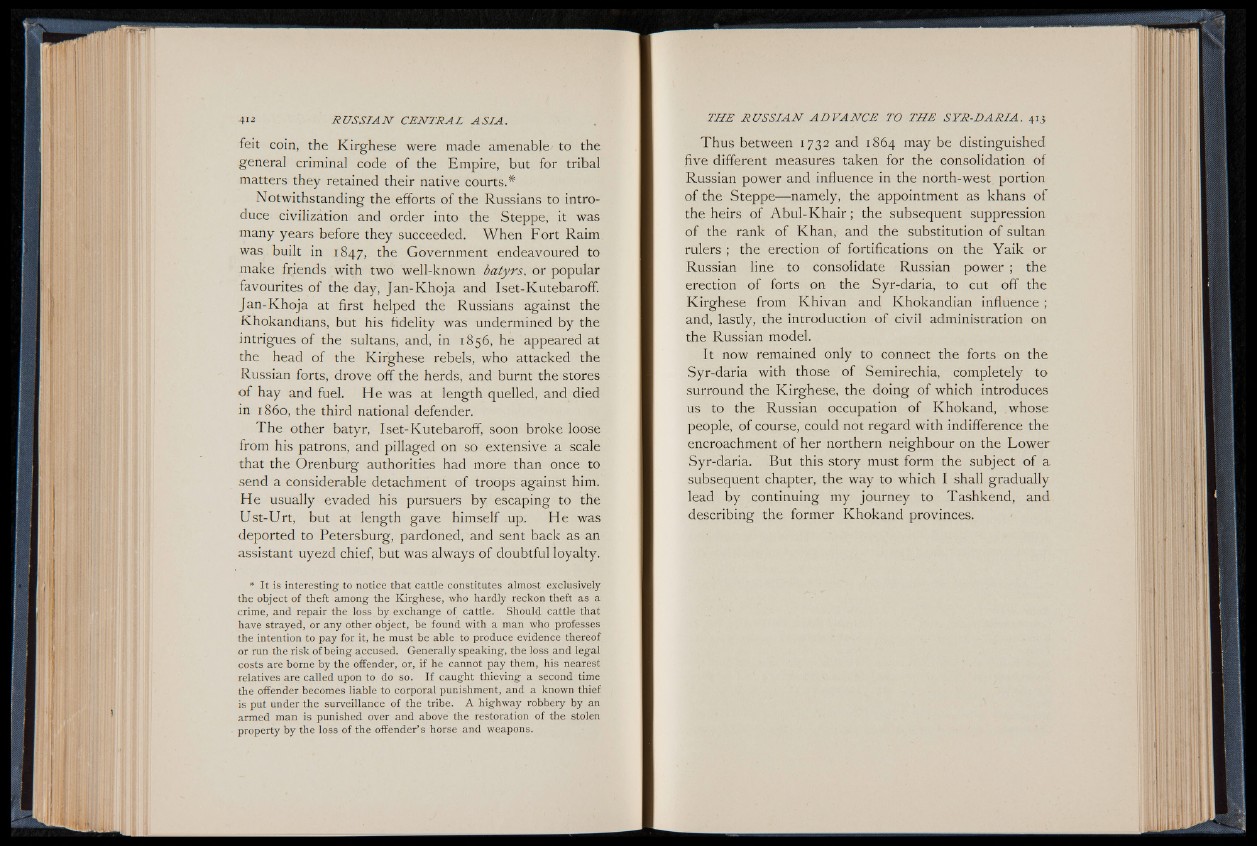
feit coin, the Kirghese were made amenable to the
general criminal code of the Empire, but for tribal
matters they retained their native courts.*
Notwithstanding the efforts of the Russians to introduce
civilization and order into the Steppe, it was
many years before they succeeded. When Fort Raim
was built in 1847, the Government endeavoured to
make friends with two well-known batyrs, or popular
favourites of the day, Jan-Khoja and Iset-Kutebaroff.
Jan-Khoja at first helped the Russians against the
Khokandians, but his fidelity was undermined by the
intrigues of the sultans, and, in 1856, he appeared at
the head of the Kirghese rebels, who attacked the
Russian forts, drove off the herds, and burnt the stores
of hay and fuel. He was at length quelled, and died
in i860, the third national defender.
The other batyr, Iset-Kutebaroff, soon broke loose
from his patrons, and pillaged on so extensive a scale
that the Orenburg authorities had more than once to
send a considerable detachment of troops against him.
He usually evaded his pursuers by escaping to the
Ust-Urt, but at length gave himself up. He was
deported to Petersburg, pardoned, and sent back as an
assistant uyezd chief, but was always of doubtful loyalty.
* It is interesting to notice that cattle constitutes almost exclusively
the object of theft among the Kirghese, who hardly reckon theft as a
crime, and repair the loss by exchange of cattle. Should cattle that
have strayed, or any other object, be found with a man who professes
the intention to pay for it, he must be able to produce evidence thereof
or run the risk of being accused. Generally speaking, the loss and legal
costs are borne by the offender, or, if he cannot pay them, his nearest
relatives are called upon to do so. I f caught thieving a second time
the offender becomes liable to corporal punishment, and a known thief
is put under the surveillance of the tribe. A highway robbery by an
armed man is punished over and above the restoration of the stolen
property by the loss of the offender’ s horse and weapons.
Thus between 1732 and 1864 may be distinguished
five different measures taken for the consolidation of
Russian power and influence in the north-west portion
of the Steppe— namely, the appointment as khans o f
the heirs of Abul-Khair ; the subsequent suppression
of the rank of Khan, and the substitution of sultan
rulers ; the erection of fortifications on the Yaik or
Russian line to consolidate Russian power ; the
erection of forts on the Syr-daria, to cut off the
Kirghese from Khivan and Khokandian influence ;
and, lastly, the introduction of civil administration on
the Russian model.
It now remained only to connect the forts on the
Syr-daria with those of Semirechia, completely to
surround the Kirghese, the doing of which introduces
us to the Russian occupation of Khokand, whose
people, of course, could not regard with indifference the
encroachment of her northern neighbour on the Lower
Syr-daria. But this story must form the subject of a
subsequent chapter, the way to which I shall gradually
lead by continuing my journey to Tashkend, and
describing the former Khokand provinces.